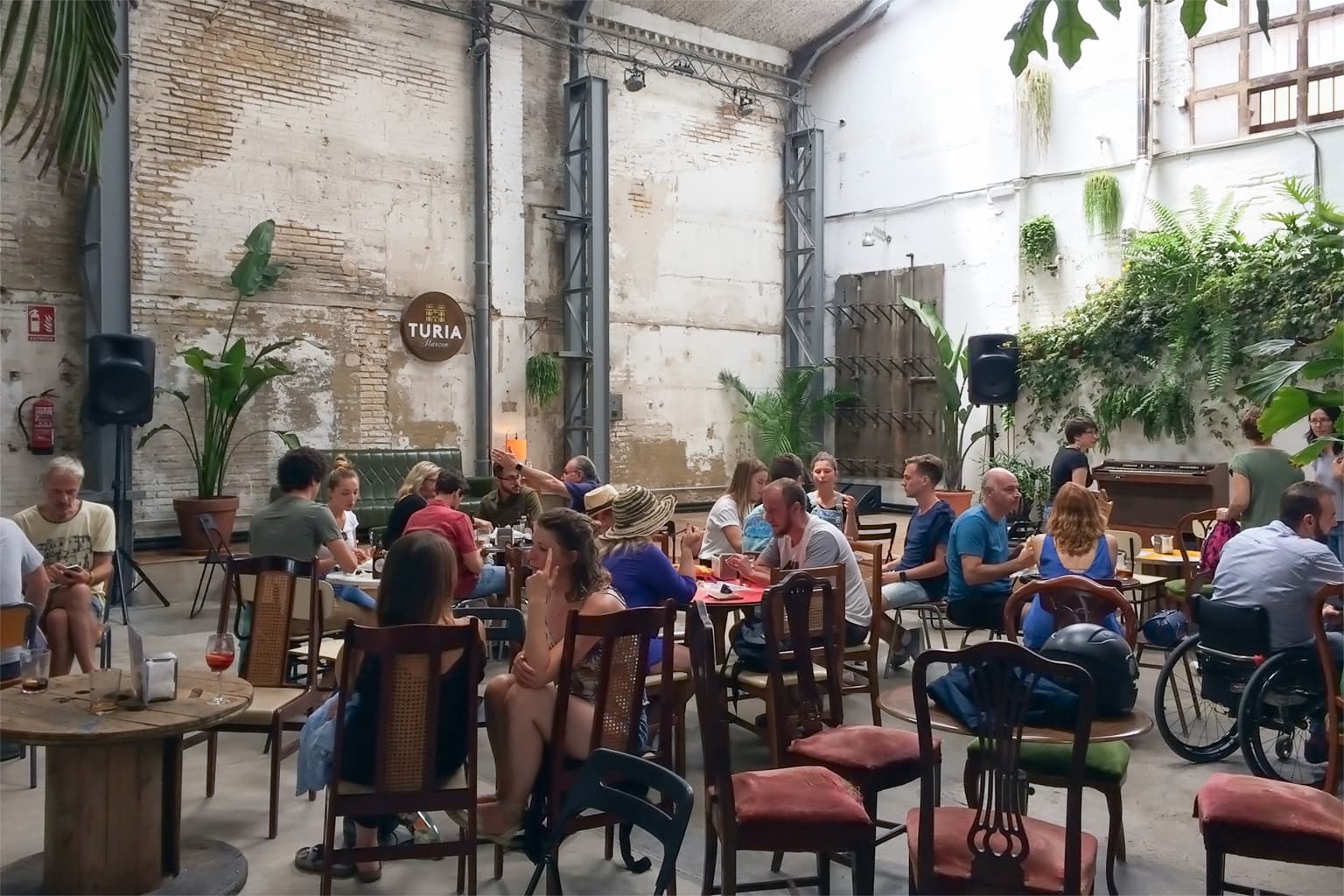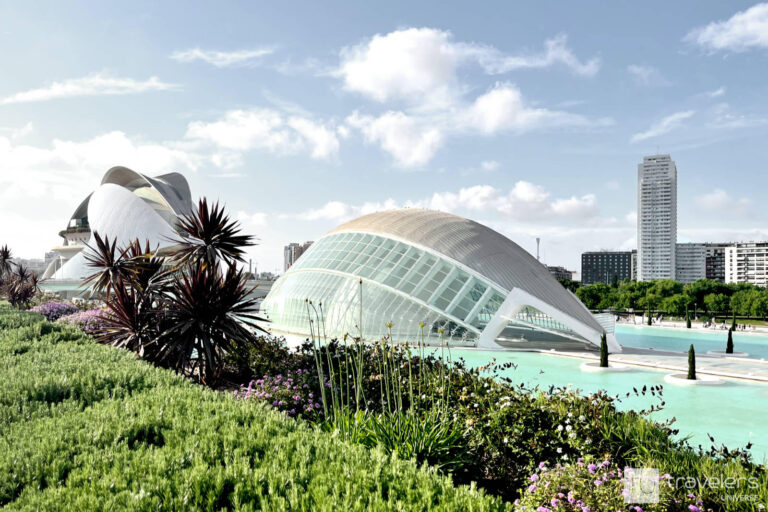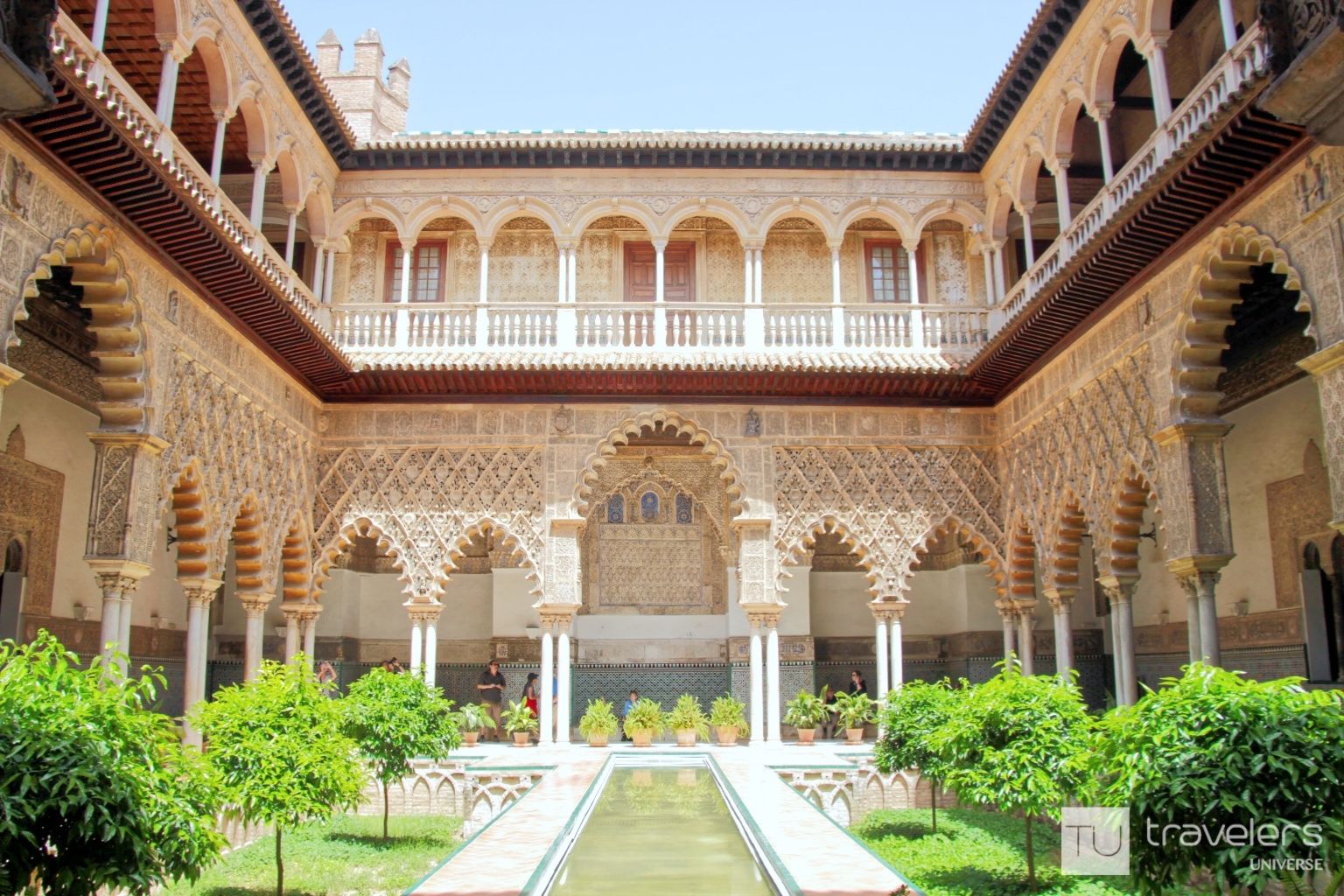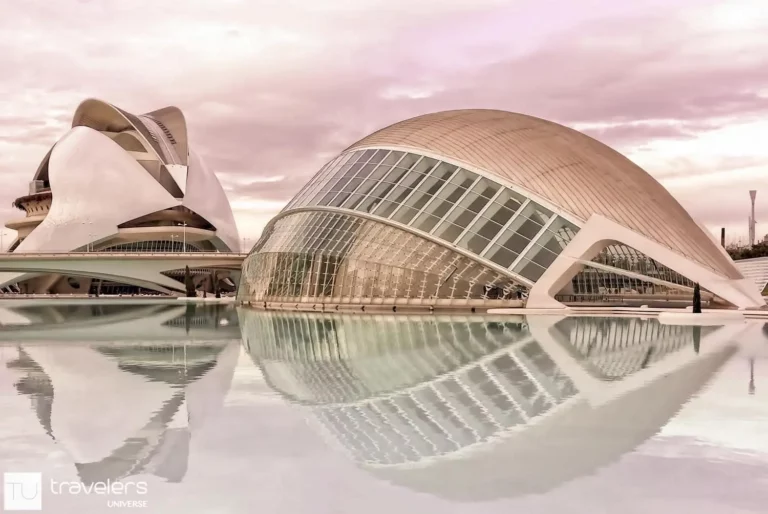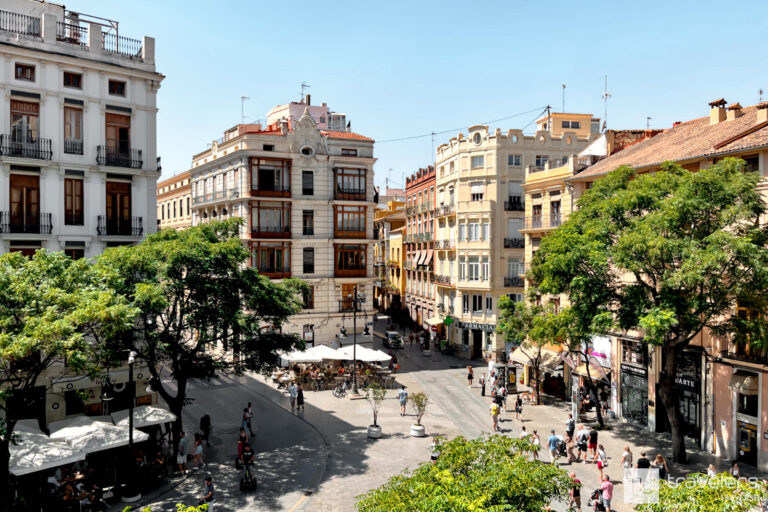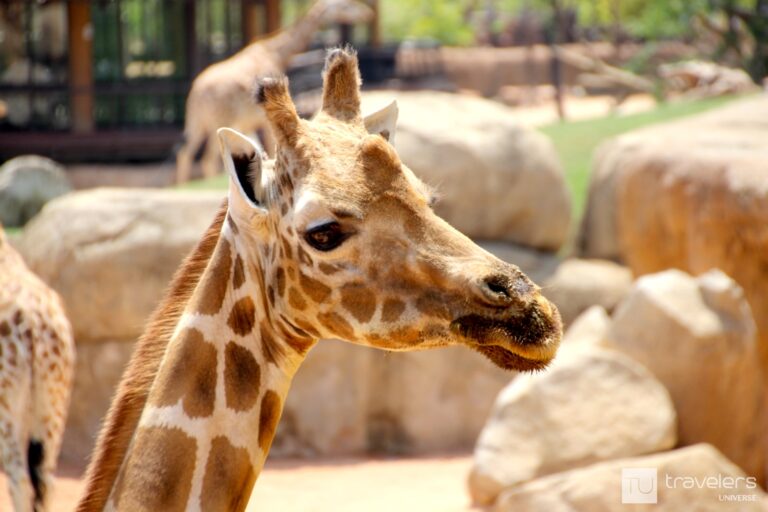This post may contain affiliate links. Disclosure
Wanna learn a few fun facts about Valencia before your trip? Vibrant, sunny, and always ready for a party, Valencia is the ideal destination for a city break. Get ready for the trip of a lifetime with these exciting Valencia facts.
Valencia is a wonderful Mediterranean city that can be enjoyed year-round. The food is exquisite. The atmosphere is laid back. And attractions include anything from thousands of years old ruins to futuristic-looking buildings and all architectural styles in between.
If you’d like to know more, here are 25 interesting facts about Valencia. These facts are not only a great introduction to this fascinating Spanish city but make good conversation starters as well.
1. Valencia was founded by the Romans
Valencia is one of the oldest and most beautiful cities in Spain. It was founded by the Romans in 138 BC and subsequently conquered by the Visigoths and the Moors. The forum and heart of the Roman city were excavated in 1985 and a unique museum was opened right behind the cathedral. So you can now go for a stroll along the two main roads that used to cross the ancient city.
2. Temperatures in Valencia can be really hot (or cold)
The highest temperature ever registered in Valencia was 43.4ºC (110.12ºF) on July 6, 1986. The lowest was -7.2ºC (19.04ºF) on February 11, 1956.
3. Valencia is Spain’s third-largest city
Valencia is the third most populated city in Spain after Madrid and Barcelona. However, the Mislata neighborhood in Valencia is the most densely populated area in Spain. It’s unlikely you’ll ever visit Mislata, but if you take the metro on your way to the airport, you will pass through it.
4. The Port of Valencia generates half of Spain’s GDP
The Port of Valencia is the busiest cargo port in Spain and on the Mediterranean, the number five in Europe and 30 worldwide. It generates 51% of Spain’s GDP due to the fact that half of Spain’s entire working population is connected to it in one way or another.
5. Valencia is the home of the Holy Grail
The Holy Grail, the cup from which Jesus drank at the Last Supper is believed to be kept in a chapel inside Valencia’s cathedral.
6. Paella was born in Valencia
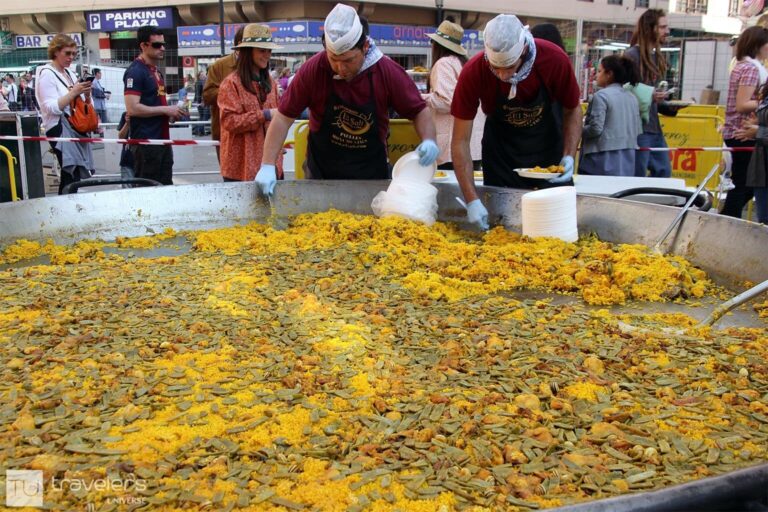
Paella, Spain’s national dish was first cooked in a freshwater lagoon near Valencia. The original recipe includes chicken, rabbit, and sometimes snails. No peas, chorizo, or red peppers are ever used in authentic paella valenciana. If you want to learn more about the world’s most popular rice dish, I wrote a post with 20 fun facts about paella and put together a list of restaurants that serve the best paella in Valencia.
7. The 15th century was a turning point in the local economy
During the 15th century, Valencia enjoyed its Golden Age and grew to be the largest city in the Iberian Peninsula, with 75,000 inhabitants. La Lonja (aka the silk exchange), the only site in the city declared a UNESCO World Heritage, was built during this time.
8. The largest market in Europe is in Valencia
Mercado Central (the Central Market) is one of the oldest and largest fresh produce markets in Europe. It was the world’s first market that accepted online orders and offered home delivery.
9. Valencia has a park that used to be a river
Throughout its history, Valencia suffered a series of floods. The most devastating one happened in 1957 when some of the streets of Valencia were 5 meters underwater. The city then decided to divert the Turia river around its outskirts. A series of projects regarding the old riverbed were presented (including a crazy one to transform it into a motorway which the locals vehemently opposed!). In the end, the old course of the river was turned into a green space. Now Turia Park is the largest public park in Spain and one of the most beautiful parks in Valencia, stretching 8 kilometers from east to west.
10. Valencia has 3 UNESCO listed attractions
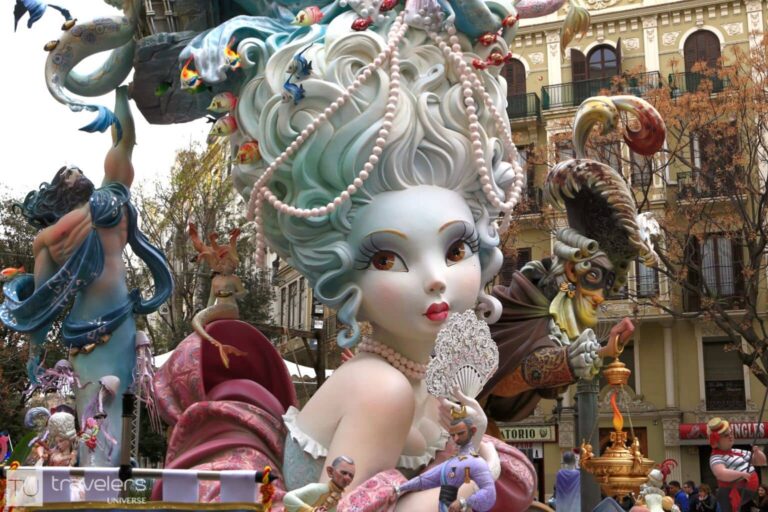
Although La Lonja is the only world heritage site in the city, Valencia counts with three UNESCO listings. The Water Tribunal, dating back eight hundred years ago, and Las Fallas Festival were added to UNESCO’s list of Intangible Cultural Heritage.
11. The architecture is reason enough to visit
The City of Arts and Sciences put Valencia on the tourist map. This is a futuristic architectural complex like nothing you’ve ever seen before and one of the top places to visit in Valencia. It was used as the backdrop for many movies, including Tomorrowland and the third season of Westworld.
12. Valencia is home to the narrowest building in Europe
The narrowest building in Europe and the second narrowest in the world is in Valencia. You can find it Plaza Lope de Vega, close to the cathedral. The facade is only 107 meters wide and 5 stories high. Why would anyone build a house so narrow? Well, back in the day, property taxes used to be paid based on the width of the facade so this was a way to lower the tax bill.
16. Agua de Valencia is the drink of choice
The drink of choice in Valencia is called Agua de Valencia. But don’t be fulled by its innocent name — this delicious cocktail doesn’t have a drop of water in it. Agua de Valencia is the perfect pick-me-up after a day of work or sightseeing. Ingredients include freshly squeezed orange juice, cava (Spanish sparkling wine), vodka, gin, and lots of ice. Now that’s a fun fact about Valencia!
17. Horchata is super popular too
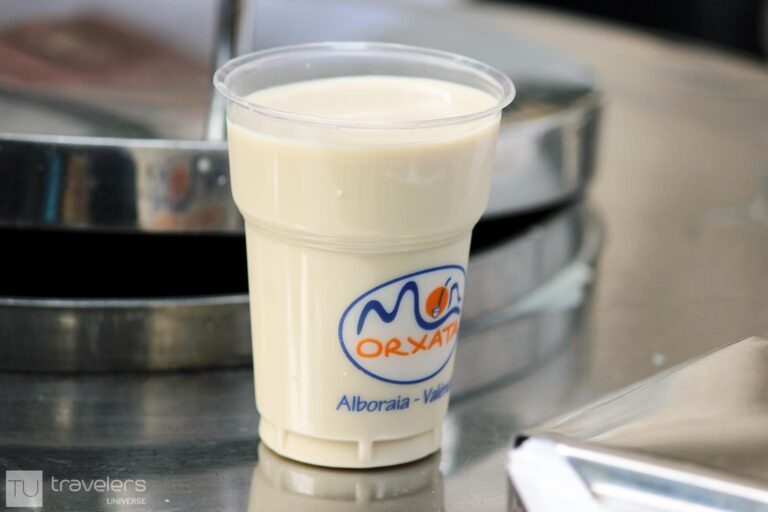
Another super popular drink in Valencia is horchata. This plant-based milk, however, has nothing to do with Mexican horchata. In Valencia, horchata is made with chufa (aka tiger nuts), a tubercule that grows in the fields of Alboraya, a small village to the north of Valencia. Locals have developed a slight obsession with it and you can see many of them enjoying a refreshing glass of horchata with fartons (sugary, elongated pastries) on a terrace during the summer months. Homemade horchata is served in cafés around the city year-round. The ingredients are as simple as chufa, water, sugar, and cinnamon. See what else to eat and drink in Valencia.
13. The heraldic symbol of Valencia is a bat
Legend has it that one night during the times of Reconquista the Moors were planning a surprise attack. As they got closer to the Christian army, they disturbed a colony of bats. The bats then woke up the Christians, which ended up winning the battle. The bat is now the heraldic symbol of Valencia.
14. The painter Joaquin Sorolla was born in Valencia
The beloved Spanish painter Joaquin Sorolla was born in Valencia. Later on, he moved to Madrid where you can now visit a museum dedicated entirely to him and his paintings. The Sorolla Museum is housed in the same house where he lived and worked. The light and sea of his native land can be witnessed throughout his work. Several of his paintings decorate the walls of the Hispanic Society of America in New York City.
15. Valencia is the land of flowers, light, and love
Many people know of La Tomatina, the famous tomato fight that takes place every August in the small town of Buñol off the coast of Valencia. But have you ever heard of the Flower Battle organized every July in the city of Valencia? Nothing bloody though. The battle looks rather like an orange and yellow shower and its suitable for all ages.
18. Valencianos love their cats
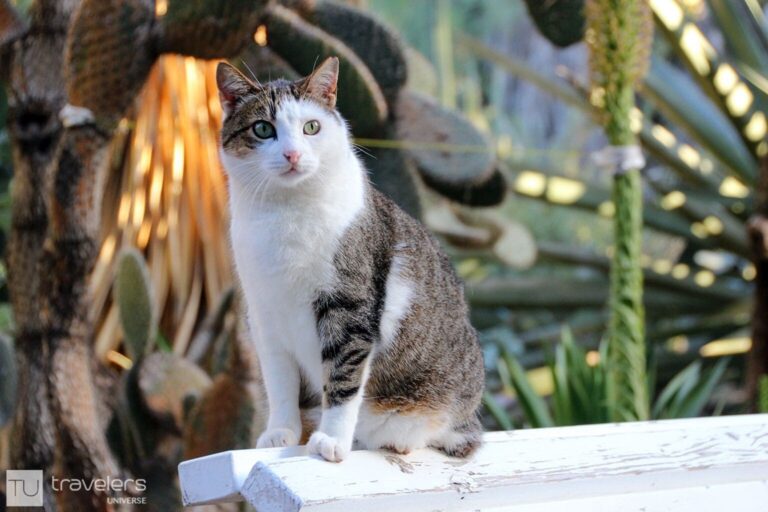
Cats are everywhere in Valencia. You’ll find them in parks and on the streets of the old town. However, the Botanical Garden is the place to be. These beautiful gardens are home to a colony of 50 something cats. If you are a cat lover be sure to keep an eye out for them. They are very friendly and well looked after by a group of volunteers. What a wonderfully furry fact about Valencia, right?
19. Even Las Meninas visited Valencia
During the Spanish Civil War, many masterpieces from El Prado, including Velazquez’s Las Meninas were taken to Torres de Serranos in Valencia for safekeeping. The consensus was that even if a bomb were to drop on this ancient city gate dating back to Moorish times, the precious works of art would still be safe.
20. The world’s first psychiatric hospital was built here
The first psychiatric hospital in the world was founded in Valencia in 1410. It brought a humane approach to mental illness in a time when mentally ill people were treated poorly and often faced exorcism.
21. The first book in Spain was printed in Valencia
The first literary work in Spain was printed in the city of Valencia in 1474. It is currently on display at the University of Valencia’s library. It’s a collection of 45 poems.
22. Sant Dionis’s Day is the local Valentine’s Day
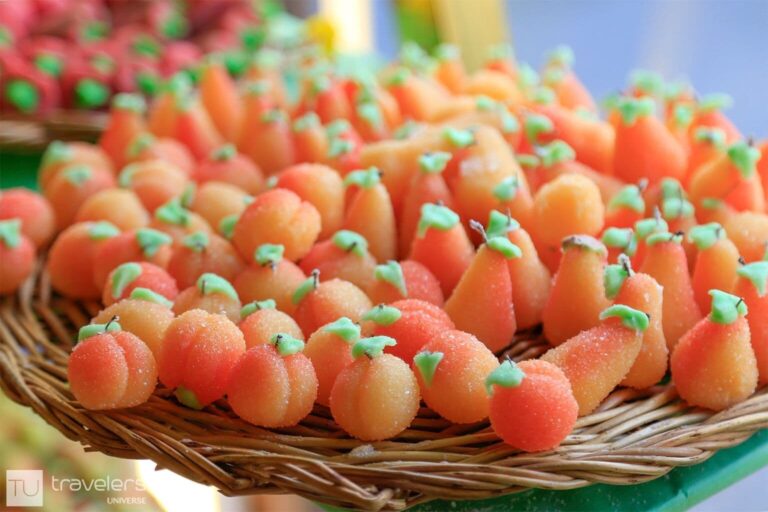
The 9th of October is the Day of the Valencian Community and it commemorates the entrance to the city of Valencia of King Jaime I in 1238 after he successfully defeated the Moors. This is also Sant Dionis Day, the local version of Valentine’s Day. It is traditional for men to give women fruit-shaped marzipan sweets wrapped in a silk handkerchief known as mocaora. What a sweet fact about Valencia!
23. Valencia used to be the capital of Spain
During the Spanish Civil War, Valencia was the capital of Spain for 11 months. Recently is has been named World Design Capital for 2022. A huge difference, but it’s good to see Valencia being a capital again.
24. Valencia hosts the largest street party in Europe
Las Fallas is a festival organized every March in the city of Valencia. It lasts a whopping 19 days and it has been proven to attract four times the population of Valencia. Las Fallas is a fun spring celebration in honor of Saint Joseph, the patron saint of carpenters. It’s the place to be if you love loud music, street lights, firecracker concerts, ephemeral art, and delicious food. And speaking of food, here are some typical foods you can enjoy during Las Fallas.
25. Valencia might be a unique city, but its name isn’t
It might sound crazy, but there are actually 58 places called Valencia in the world. Four of them are in Spain alone.
Would you like to learn more? Read these interesting facts about Spain or plan your next vacation with my 2 weeks in Spain itinerary.

